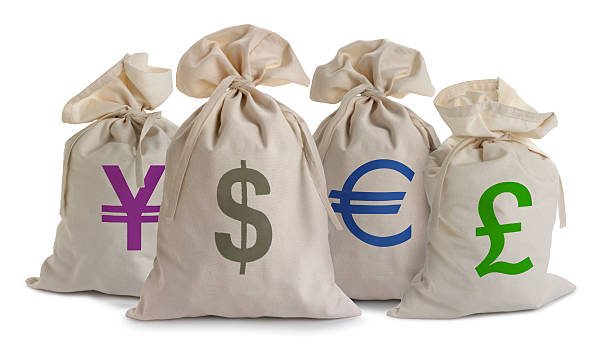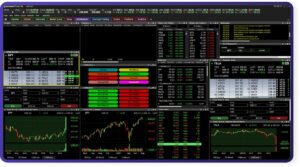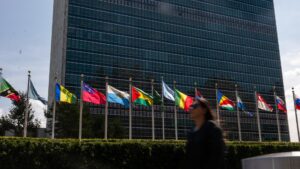Markets
As was the case since Tuesday, global trading was kept in some kind of holding pattern. Potential drivers were central bank speakers, a US (30-y) auction and the weekly jobless claims. Fed Barkin joined his colleagues in their view that robust demand and strong labour data give the Fed the opportunity to build more confidence that inflation indeed is on the desired path. He acknowledged the importance of stress in the real estate market. The Fed is closely monitoring the risk but he didn’t draw firm conclusions for monetary policy. ECB’s speakers Holzmann and Wunsch as usual kept a rather hawkish bias as they want more clarity on the impact of wage rises on inflation. Holzmann even kept the option open that the ECB won’t cut rates this year. Evidently, that’s not the mainstream view. ECB’s Lane maintained a softer, middle of the road position. He applauded recent decline in inflation but sees two-sided risk. US jobless claims dropped from 227k to 218k after a recent uptick, but the outcome was close to expectations. In in line other auctions this week, the sale of $25bln 30-y Treasuries attracted ample investor interest (awarded at 4.36% VS 4.38% WI bid). Yesterday’s ‘news’ can be labelled as neutral. Still, US yields added between 4.7 bps (5-y) and 2.7 bps (2-y). German yields rose between 2.9 bps (30-y) and 4.1 bps (5-y). Yields are again nearing the YTD top levels/technical resistance. This is especially the case for EMU swap yields (2-y at 3.08%,. 10-y at 2.74%). Still no clear trend in major FX. DXY gained slightly (close 104.16). EUR/USD didn’t go anywhere (close 1.0778). The yen underperforms. USD/JPY cleared the 148.8 resistance (close 149.32). BoJ comments of late apparently convinced markets that even leaving the negative policy rate won’t cause an abrupt tightening of monetary conditions in the country. The overall low-volatility climate again pushed the Eurostoxx 50 to a new cycle top (+0.68%). Closing gains in major US indices were minor, but the S&P intraday touched the 5000 barrier.
Trading in Asia this morning takes a slow start as many markets are closed for the Lunar New year holidays. Later today, the calendar in Europe and the US is again very thin. We keep an eye at the (technical, multi-year) US CPI revisions. It’s a bit old news but a market reaction remains possible. However the focus now turns to next week’s US January CPI data.
News & Views
The Czech central bank stepped up the cutting pace from 25 bps in December to 50 bps yesterday, lowering the policy rate to 6.25%. The Board assumes that inflation fell to around 3%, i.e. to the upper boundary of the tolerance band around the target, in January. It nevertheless sees upside risks for the years ahead, warranting caution and a still-tight monetary policy. The CNB for this reason also believes that interest rates will be higher than implied by the new forecasts (which see the policy rate easing sub 3% by end this year). The Czech economy rebounded in Q4 but both external demand and household consumption remain weak. The CNB expects subdued 0.6% growth this year to accelerate to 2.4% in 2025. While the labour market remains tight and unemployment low, wage growth has slowed and the risk of a wage-price spiral is not materializing. Average inflation for this year is seen at 2.6% and 2% in 2025. Core inflation, however, would remain at an elevated 2.9% in 2024. Despite the CNB trying to balance yesterday’s decision by adding that the cutting cycle can be paused or terminated at any time, Czech swap rates tumbled up to 25 bps at the front end. The Czech crown tanked. EUR/CZK shot up beyond 25(.24) to the highest level since 2022H1. It is now materially weaker than in the CNB forecasts.
Gita Gopinath said the Bank of Japan could avoid large spillovers to the rest of the world when it begins to normalize its ultra-easy monetary policy. According to the IMF’s First Deputy Governor a closed output gap and higher wage growth will allow the central bank this year to end its yield curve control and massive asset-buying programme. But it’s critical that it does so by moving gradually and providing clear communication along the way. The April policy meeting, which produces new forecasts, is seen as a live one which could mean the end of a negative policy rate (currently -0.1%). But in a Reuters interview, Gopinath noted that further raises should happen slowly, “over a few years.” This gradual approach is needed given the high amount of uncertainty, including about where the neutral rate lies. IMF estimates are between 1-2%.









